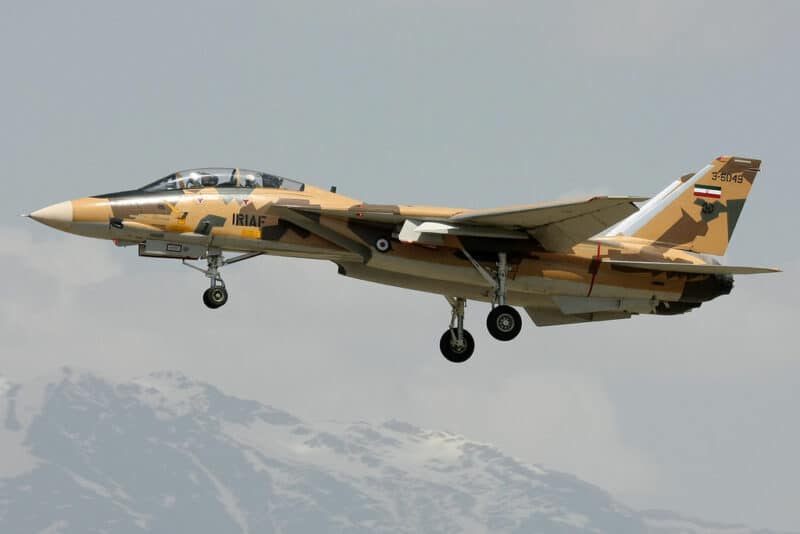At the beginning of the 70s, Iran was considered one of the most valuable allies of the United States in the Middle East in order to control the Soviet threat as well as the growing power of the Iraqi armed forces, which were largely supported and equipped by Moscow. In 1972, President R. Nixon authorized the sale to Tehran of one of the most advanced combat aircraft in the American arsenal, the F-14 Tomcat, as well as the brand new AIM-54 Phoenix missile with active radar guidance. capable of reaching aerial targets up to 130 km away, in order to counter the arrival of new Mig-25s in the Iraqi air force. When the Sha regime was overthrown by the Islamic Revolution in 1979, the Iranian Air Force fielded a formidable fighter fleet with 80 F-14 Tomcats, over 220 F-4 Phantom 2s and 130 F-5 Freedom Fighters. But the hostage crisis at the American embassy in Tehran convinced Washington to impose very strict sanctions on the country, canceling orders for 160 F-16s and 230 F-18s signed shortly before the collapse of the regime. by Mohhamad Reza Sha.
The opportunities for Tehran to acquire new aircraft were then very limited, the Soviet Union and France actively supporting Baathist Iraq, Great Britain being aligned with Washington, and Beijing having, at that time, no structured export offer. In fact, throughout the war against Iraq, from 1980 to 1988, the Iranian air force had to operate in complete autarky, not without success against the Iraqi MIG, Sukhoi and Mirage. However, at the end of this war, due to attrition in combat but also to cannibalism of aircraft in the absence of parts, the Iranian fighter fleet had been reduced by half, and was facing immense difficulties in terms of of availability, while Western and Soviet sanctions continued to apply. Tehran managed to acquire, in the early 90s following the first in the Gulf, new fighters, 40 Mig-29s from Moscow as well as 24 Chinese J-7s, while around forty Su-22s and twenty Mirages Iraqi F1s came to take refuge in Iran to escape the Allied air campaign against Baghdad.

Since then, the theoretical inventory of the Iranian fighter fleet has hardly changed, except due to attrition linked to accidents, the aging of the fleet and maintenance difficulties. From 2006, following the resumption of uranium enrichment works by Tehran, very severe sanctions were imposed against the country by the United Nations Security Council, depriving its air forces of any possibility of modernization, including to Moscow or Beijing. In addition, while the Iranian defense industry has made significant progress in recent years in certain areas, such as drones, ballistic missiles et anti-aircraft defenses, the design of an effective modern fighter aircraft remains elusive, despite inconclusive attempts by aircraft manufacturer HESA with the Saeqeh and Kowsar light fighters derived from the F-5. But things could well be set to change in the months to come. In effect, according to the Pentagon, Iran would have sent pilots and maintenance teams to Russia to train on the Su-35s, the most advanced fighter in the Russian air force, and could receive around twenty aircraft from 2023 to strengthen and modernize its forces. aerial.

75% of this article remains to read,
Subscribe to access it!
The Classic subscriptions provide access to
articles in their full version, and without advertising,
from 6,90 €.
Newsletter subscription
Register for the Meta-Defense Newsletter to receive the
latest fashion articles daily or weekly


[…] […]
[…] and ally, agreements concerning the acquisition of highly advanced military equipment, such as the 24 Su-35s initially built for Egypt, but never delivered. The growing isolation of the two countries on the world stage is indeed a […]
[…] of certain abilities like missiles. Thus, several converging sources indicate that the 24 Su-35ES initially built for Egypt but whose delivery has been cancelled, ... while Iranian pilots and maintenance technicians are already trained in Russia. Of […]
[…] December 10, 2022 […]